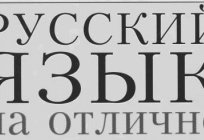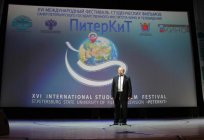Now - 20:39:42
The abolition of serfdom
In Russia, by the mid-19th century agrarian-peasant question became an acute political problem. Of all the States of Europe serfdom was only in it that created obstacles to social, political, and economic development. The preservation of serfdom was associated with the characteristics of autocracy. Since the founding of the country and of absolutism in it, the government relied exclusively on the nobility, and therefore was obliged all his interests into account.
Most public figures and statesmen were agreed that serfdom in Russia is a disgrace to the state, attributing it to the category of backward States. The subject of peasant liberation was constantly discussed by the public in the late 18th to mid - 19th centuries. The abolition of serfdom occupied the minds of the Slavophiles, Westerners, the Decembrists. The question of peasant liberation was raised by some deputies of the legislative Commission – by Coprofam, Maslov, Polezhaeva. The abolition of serfdom was concerned educators, and other radical public figures.
By the mid-19th century has been contributing to the destruction of the feudal system factors. It should be noted that this system has outlived its usefulness, mainly from an economic point of view. Based on the work of the serfs, the landowners farm fell into decay. The government of this state was concerned, since on the support of the landlords spent a lot of money.
The Abolition of serfdom was necessary for the country. In the conditions of peasant dependence was hampered industrial upgrading power. Serfdom was an obstacle to the accumulation of capital that was invested in production. Furthermore, it impeded the formation of a market of free labor, increase the purchasing power of the population.
The Abolition of serfdom meant the granting to the peasants personal liberty and civil rights. The Manifesto was adopted in 1861, 19 Feb. Under the new reform, the farmer could enter into transactions and to own immovable and movable property, to act as a legal entity. From that moment, people were emancipated from the landowner, could marry without his permission. The peasants were admitted to the service and learning in other classes (commoners and merchants).
Serfdom was abolished, however, the personal freedom of the peasant was limited. Mainly, it concerned the preservation of the community. Bourgeois development in the village was hampered by communal ownership of land, collective responsibility, the limits of the plots. Peasants at the time was the only social layer, which had to pay a poll tax, carried conscription, and could be subjected to beating as a punishment.
The provisions of the emancipation of the peasants to regulate the allotment of their plots of land. However, in the process of addressing this issue of land for released was reduced significantly. In addition, the resulting allotment the peasant had to pay the ransom. Of course, money. For one-time receipt by the landlords of redemption, the state had provided the peasants a loan for 49 years, constituting 80% of the value of allotments. However, in 1906 the farmers of the cancellation of the redemption payments. It should be noted that by the time they were given in the order of 2 million rubles, which is almost four times higher than the real market value of the land in 1861. Along with this, the peasant payments to the landowner were prolonged and gave rise to so-called temporarily-obliged state, which was abolished only in 1881.
According to contemporaries, the peasant reform was a great event. The Manifesto has released more than 30 million people, created the conditions for the economic development of the country at the time. However, the abolition of serfdom was a complex compromise between society and the state.
Article in other languages:
AR: https://tostpost.com/ar/education/14264-the-abolition-of-serfdom.html
BE: https://tostpost.com/be/adukacyya/24847-admena-prygonnaga-prava.html
DE: https://tostpost.com/de/bildung/24605-die-aufhebung-der-leibeigenschaft.html
ES: https://tostpost.com/es/la-educaci-n/24468-emancipaci-n-de-los-esclavos.html
HI: https://tostpost.com/hi/education/14037-the-abolition-of-serfdom.html
JA: https://tostpost.com/ja/education/13995-serfdom.html
KK: https://tostpost.com/kk/b-l-m/25068-k-sh-n-zhoyu-kreposnoyly-y.html
PL: https://tostpost.com/pl/edukacja/25994-zniesienie-pa-szczyzny.html
PT: https://tostpost.com/pt/educa-o/25711-emancipa-o-dos-servos.html
TR: https://tostpost.com/tr/e-itim/25028-ptal-k-lelik.html
UK: https://tostpost.com/uk/osv-ta/25336-skasuvannya-kr-posnogo-prava.html
ZH: https://tostpost.com/zh/education/10530-the-abolition-of-serfdom.html

Alin Trodden - author of the article, editor
"Hi, I'm Alin Trodden. I write texts, read books, and look for impressions. And I'm not bad at telling you about it. I am always happy to participate in interesting projects."
Related News
Roman law 12 tables: General characteristics and history of creation
the laws of the 12 tables, General characteristics of which will be considered by us famous monument of ancient Roman law. It is believed that they were composed by Commission of ten men (decemviri) in 451-450 BC Decemviri during ...
When a comma before "and" in what cases?
the Union “and” is the most common in the Russian language. And though at first glance the rules of punctuation associated with it, seem very easy, in fact it is not. It is not always clear, appropriate or no comma bef...
The Abel prize, its laureates and their achievements
the Abel prize is an analogue of the Nobel prize, but with the only difference that the latter are unable to mathematics. Specially for them in 2002 in Norway and was established this award. Since 2003, it is given the best mathem...
Merge Left and Right of Jan form a small water flow located in one of the regions of Russia. Its mouth is the sea of Okhotsk, and the important inflow – Sejmcan. The Yana river is located in the Magadan region, in the North-...
St. Petersburg Institute of film and television invites applicants
In Russia, there are universities whose glory is spreading across Europe. Among them – Saint-Petersburg Institute of cinema and television. Almost century-old tradition of this school ensures the training of qualified person...
Mexican language: does it exist? What languages are in fact spoken in Mexico?
Mexico – it is a huge country in North America, a total area of 1.95 million km. From the Northern and Eastern parts of Mexico bordering the United States. With the Eastern part of the country is washed by the waters of the ...



















Comments (0)
This article has no comment, be the first!